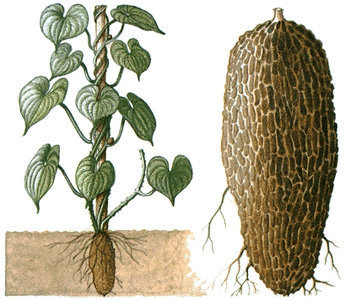Yam is a major food crop in many tropical countries. The edible part of the yam plant is its tuber. This enlarged portion of the plant’s stem grows underground and stores food for the plant. The tuber contains a large amount of starch and water, and some sugar. Some tubers contain poisons that may cause illness if they are not destroyed by cooking. The tubers of some wild yams produce compounds called saponins that can be used to make cortisone and certain other drugs.

The word yam is commonly used to refer only to yam tubers. Some yams weigh as much as 100 pounds (45 kilograms) and measure as long as 6 feet (1.8 meters). Their flesh is white or yellow. Yams are often confused with sweet potatoes, especially in the United States. There, marketers sometimes refer to orange-fleshed varieties of sweet potato as yams to distinguish them from white-fleshed sweet potatoes (see Sweet potato ).
Yam plants are climbing vines. Their stems bear small green flower clusters. Yams require hot, moist weather and a long growing season. Millions of tons of yams are grown for food each year. African countries produce nearly all of this crop. Yams also grow in India and in the countries of Southeast Asia and the Caribbean Sea. The United States grows no yams due to the cold climate and short growing season.
